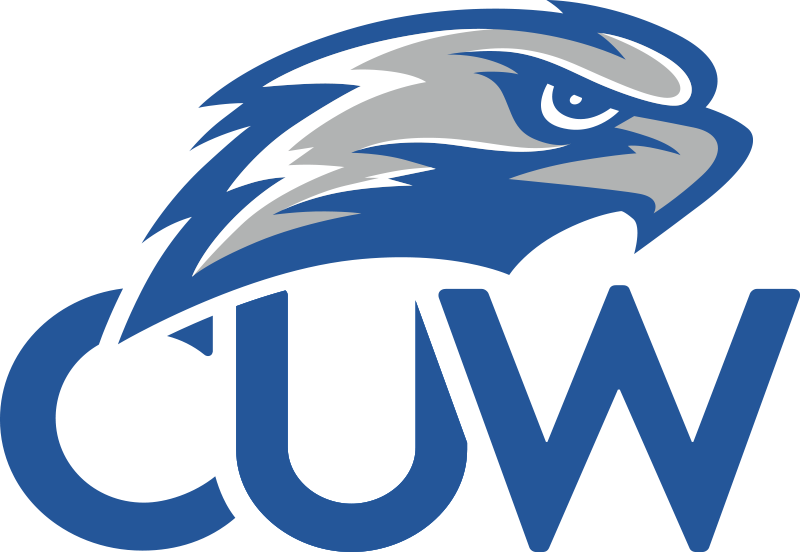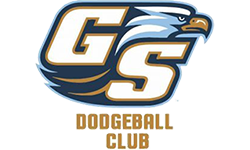So, you’ve finished your 2023 NCDA season. Congrats! Whether you’re a rookie looking at your first ever off-season or a senior preparing for one last ride, there is a ton of potential for improvement in one good off-season. This article will go into what to do this summer to come back better than ever this fall. What if you’re playing in the NDA this summer? Don’t worry, we have that covered too!
When you’re thinking about how to best spend your off-season, it is important to consider three main goals. These do overlap a bit in the actual steps you’ll take but it’s good to understand the ‘why’ behind what you’re doing.
First, you need to get healthy. Even if you aren’t injured you may have been dealing with some minor aches and pains and the early off-season is a great time to get back to feeling 100%.
Second, you need to increase your physical abilities. This means getting stronger, faster and more flexible. This will help in every aspect of your game on the court and will make returning to playing that much easier.
Third, you should work to improve the technical aspects of your game. This means throwing better, catching better, and learning more about the strategy of the game. There’s a lot more thought involved in dodgeball than just throwing a ball through somebody’s chest (sometimes).
Now it’s time to get into what you can do off the court to improve your game during the offseason. If you have an injury, you should see a doctor to get further advice. If you are just dealing with some minor aches and pains taking it easy for 7-10 days should resolve most or all of them.
Once you’re feeling fresh and ready to go, it’s time to start working. We’ll start in the gym. If you aren’t already, you should be weight training. I recommend 3 days a week to start with a focus on doing a little bit more weight or a couple more reps each week on a well-rounded range of exercises. A good place to start is by picking one exercise from each of the categories below and doing three sets of 5-8 reps once a week. Once you can do 8 reps at a given weight, increase by 5 pounds the next week and shoot for 5 reps there.
- Horizontal Press: Barbell bench press, push-ups, dumbbell bench press
- Horizontal Pull: Barbell row, dumbbell row, cable row
- Vertical press: Military Press, dumbbell shoulder press, push press
- Vertical pull: Pull-up, chin-up, lat pulldown
- Squat: Back squat, split squat, leg press
- Hinge: Dumbbell RDL, trap bar deadlift, barbell RDL
I recommend doing one lower body day, one upper body day, and one full body day a week. I build workouts around my main lift(s) for the day then do a few similar exercises after. So a week might look something like this:
- Sunday: Deadlift + Hip Thrusts, Hamstring Curls
- Monday: Off
- Tuesday: Bench Press, Row + Shoulder Raises, Abs
- Wednesday: Off
- Thursday: Squat, Military Press, Pull-up + Arms, Calves
- Friday/Saturday: Off
Remember this is suggestion! Adjust this to fit your schedule and preferences, a plan is only good if it’s something you can and will do consistently.
This is also a time to change your bodyweight if you feel you need to. It’s important to weigh yourself at least once a week when gaining or losing weight so you know if your plan is working. If you feel you need to gain weight or muscle, simply add a couple bites to each meal or something like a PB+J with dinner and that should do the trick for most. If you do this for a two weeks and haven’t gained any weight eat a little more, it might not be easy but it isn’t complicated. The same goes for those trying to lose body fat. Simply take what you would normally eat, and eat about 10% less. If you haven’t lost a pound after a week eat a little bit less, and if you find yourself losing more than two pounds a week eat a little bit more. You don’t want to starve yourself, you’re an athlete and you need to treat your body as such.
While gaining strength and muscle is an important part of becoming a better athlete and dodgeball player, nobody wants to get stiff and slow! That’s why it’s important to make sure you’re sprinting and jumping in your training on a weekly basis. I make sure to start every workout with 10 minutes of jumps or sprints. This doesn’t mean going for 10 minutes straight, just set a timer and rest when needed. Making sure each rep is as good of a jump or sprint you can is the most important thing here, so make sure you feel rested before doing each rep. Just like lifting weights try to get one more sprint or a couple more jumps in each week in those 10 minutes. It’s a big bonus if you can measure your jumps and time your sprints!
Now you’re ready to be strong and fast, but you’re a bit stiff. Now it’s time to talk about mobility. This is a vital ability for all throwing athletes to have and dodgeball players are no exception. I do some form of stretching every day, and I measure my progress by seeing how my toe touch, side split, back bend, and dead hang improve on a weekly basis. These movements test nearly every aspect of mobility a thrower needs so they are great for tracking progress. I choose which stretches to do by finding those that feel good and help with what feels tight based on the progress poses mentioned earlier.
If you want more specific drills, I like the Javelin Mobility Daily program. It’s run by a throwing mobility expert, and while it’s called Javelin Mobility it’s designed for all throwing athletes. This program is updated weekly and while it comes with a small monthly fee it has helped me make tremendous progress in a short period of time. They have also agreed to give the NCDA a 20% discount, so you can use the discount code “NCDA20” when checking out to get the discount for as long as you use the program.
Now the summer for most people means time away from throwing. I personally like to keep throwing at least once a week year round, taking 2-3 weeks off at some point during the year. If you do take time off from throwing it is a great opportunity to get better. You have extra time and energy to spend working on the things I mentioned above, and this extra focus can give you a big step forward towards a productive offseason. You should still strive to pinch a dodgeball 50-100 times a week so you don’t lose grip strength in your time away from throwing. Doing just 25 reps 2-3 times a week only takes a couple minutes and it will go a long way when you start throwing again.
Now for perhaps the most important part of this article and your offseason. If you don’t take any of my other advice, please follow this piece. The following will explain the basics of ‘ramping up’ your throwing. While it feels tempting to jump right back in at 100% this is one of the worst things you can do for your arm health and performance. Imagine if you didn’t move faster than a walk for a month, then tried to go sprint as fast as you could. You’d probably pull something, and it’s the same idea for throwing.
Some people will be on different schedules this summer depending on if you’re playing in the NDA or not. If you are, follow this 3 week ramp up program leading up to your first event. It’s worth noting, if you take less than 10 days off from throwing you should be fine, but following this will likely make sure you feel better while throwing when you finally cut it loose.
- Week 1:
- Monday: 20-30 throws at 50% effort
- Wednesday: 20-30 throws at 50% effort
- Saturday: 25-35 throws at 60% effort
- Week 2:
- Monday: 30-40 throws at 60% effort
- Wednesday: 30-40 throws at 60% effort
- Saturday: 40-50 throws at 70% effort
- Week 3:
- Monday: 40-50 throws at 80% effort + 5-10 max effort throws
- Wednesday: 25-30 throws at 70% effort
- Saturday: Tournament
If you aren’t playing this summer (or you’re 5 weeks or more from your next tournament) then follow the plan below. I strongly encourage everyone to follow the plan below if you have the time for it, though I understand not everyone has 5 weeks until their next tournament and the 3 week version is better than nothing.
- Week 1:
- Monday: 20-30 throws at 50% effort
- Wednesday: 20-30 throws at 50% effort
- Saturday: 25-35 throws at 60% effort
- Week 2:
- Monday: 30-40 throws at 60% effort
- Wednesday: 30-40 throws at 60% effort
- Saturday: 40-50 throws at 70% effort
- Week 3:
- Monday: 40-50 throws at 80% effort
- Wednesday: 40-50 throws at 80% effort
- Saturday: 60-70 throws at 80% effort
- Week 4:
- Monday: 60-70 throws at 80-90% effort
- Wednesday: 30-40 throws at 70% effort
- Saturday: 30-40 throws at 90-100% effort
- Week 5
- Monday: 50-60 throws at 80-90% effort
- Wednesday: 25-30 throws at 70% effort
- Saturday: This would ideally be your first tournament of the season. In tournaments you shouldn’t focus on your throw count at this point and just play your game. If you don’t have a tournament here, you can repeat weeks 3 and 4 until you do have a tournament. Counting practice throws is a good thing!

























